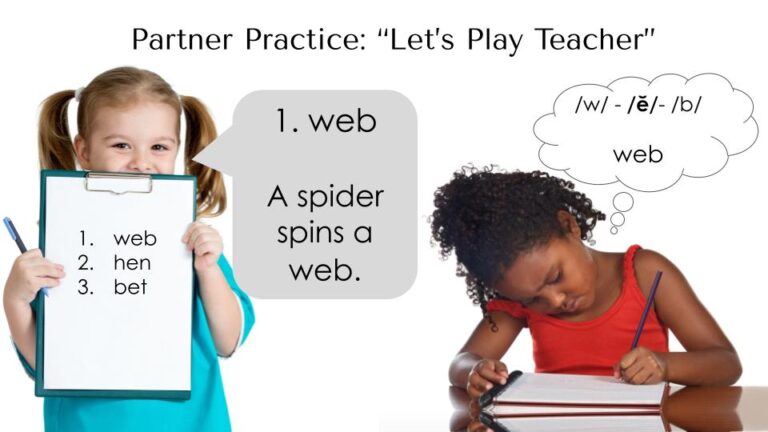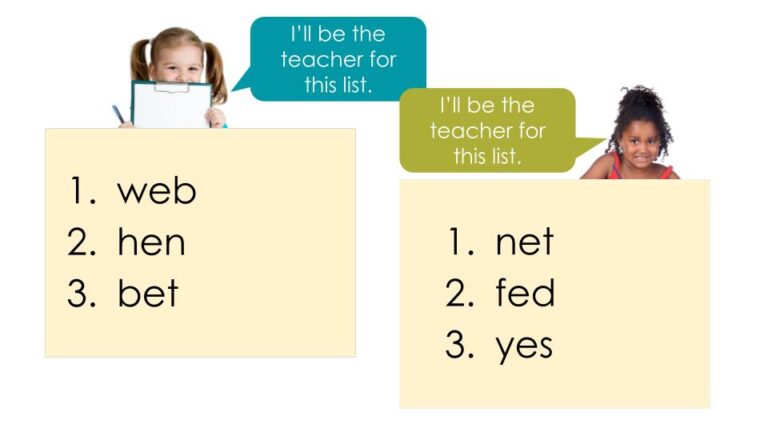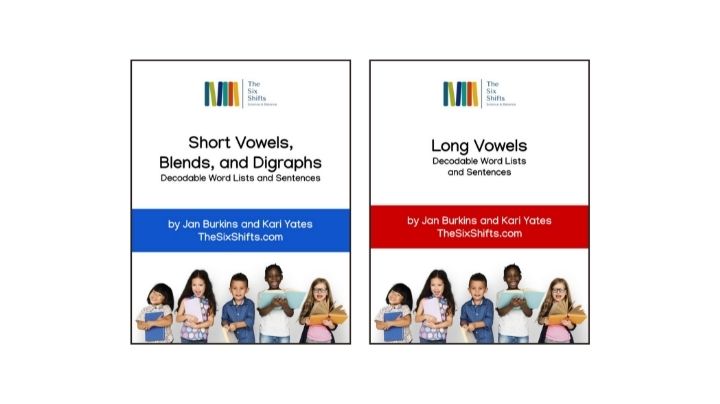Last week we offered seven ways to use our “Decodable Lists and Sentences” to supplement and support your phonics instruction. Based on the positive response from readers, we decided to add one more way to use these collections.
Today’s idea is focused specifically on a routine that will engage children in meaningful, independent practice–a topic we find popping up a lot right now, as the teachers we work with implement these shifts.
We admit, the name “Let’s Play Teacher” is more descriptive than creative, but we like it because it gets to the point. After all, kids are watching you! And what can be more fun than actually taking the teacher’s reins for a while!

“Let’s Play Teacher” gives children blending, writing, careful checking and rereading practice with decodable word lists during independent work time. Here’s how it works:
Materials:
Paper and pencil for each child.
Lists of 3 – 5 decodable words in a font appropriate for children. Options include:
Handwritten on index cards, or
Printed and placed in page protectors on a clipboard.
Student Directions:
PICK ROLES: Before starting with the five steps below, students should decide who will be the teacher and who will be the students for the first round. Our favorite strategy for this is Rock-Paper-Scissors, but you decide what will work best for your students. Once roles are decided, it’s time to follow these five steps with the first word list.

- Both students READ the first word list together orally.
2. “Teacher” then READS each word slowly while the “student” LISTENS carefully and WRITES the words on their paper (without looking at the words).
- Challenge: The “teacher” can also offer a sentence using the word in context as a boost to oral language development.
3. After the student has written all of the words on the list, the teacher CHECKS each word carefully, celebrating successes and identifying any tricky spots.
- Option: Teacher can make a small star, smiley face, or use a small sticker for each correct word.
4. If there are errors, the “teacher” and the “student” REVIEW and PRACTICE writing them together, saying each sound slowly as they write each sound-spelling. The teacher can write on a dry erase board while the student writes on paper.
5. Once the written list is correct, “teacher” and “student” READ the list together, as they did in step one.
SWAP ROLES: Now it’s time to SWAP roles and REPEAT with a new list of words.
If you’d like a visual to support your students in remembering the steps, we’ve created one for you. It’s ready to print and use. Just add the appropriate word lists. Enjoy!

-

Jan Burkins and Kari Yates are authors, speakers, and consultants, who are dedicated to helping teachers around the world translate reading science into simple instructional moves that help teachers make learning to read easier for their students while still centering meaning-making, engagement, and joy.
Recent Posts



Great resource. Thank you!
Enjoy!